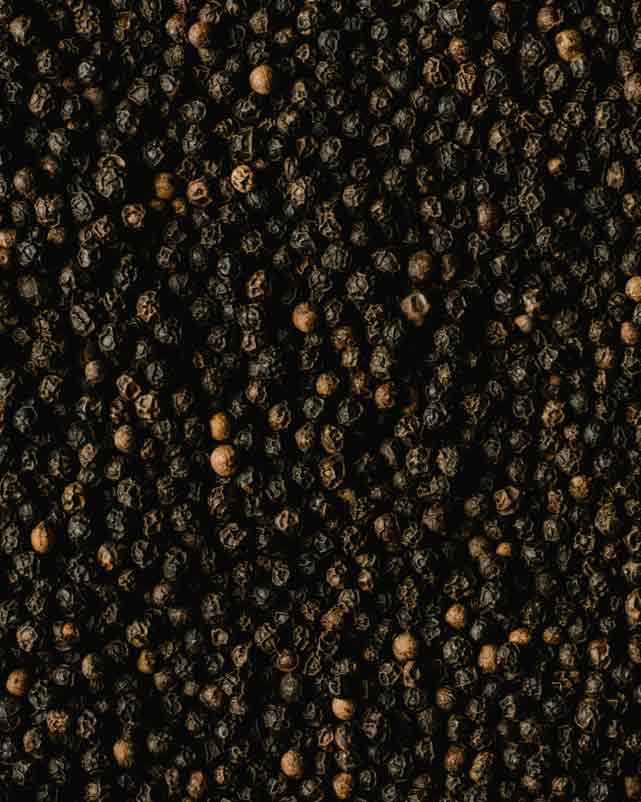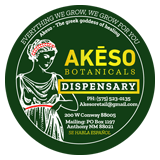Cannabis is a complex plant that works through the interactions of various chemical components.
Cannabinoids
Cannabis is a complex plant that works through the interactions of various chemical components. While we're continually discovering more about the compounds that make weed work—including things like terpenes, flavonoids and cannasulfurs—the OG elements of the plant's therapeutic applications are the cannabinoids. Humans have receptor sites within our bodies that are configured to respond to cannabinoids. The ultimate goal of this interplay is to create stability and promote wellness.
Here's a rundown of common cannabinoids and their effects:
THC
Tetrahydrocannabinol (THC) is the most well-recognized cannabinoid because it's the one that's primarily responsible for the psychoactive effects of cannabis, the "high." Once the only measure of the quality of any given cannabis flower, this cannabinoid's brilliance over all others is only now starting to dim slightly with the rise of CBD. THC can alter the functioning of the hippocampus, the area of the brain that stores memories. THC also impacts the brain's areas associated with pleasure, concentration, movement, coordination, and time perception. It's the most prevalent of the active ingredients in cannabis. The presence of THC. more specifically 0.3% THC, is the arbitrary measure that defines a plant as cannabis as opposed to hemp.
CBD
Cannabidiol (CBD) is the second most prevalent cannabinoid found in cannabis. This cannabinoid doesn't make people feel "stoned" or intoxicated and can alleviate some of the adverse effects of feeling too high. Scientists and researchers are studying CBD to treat a wide range of illnesses associated with anxiety, chronic pain, depression, and inflammation.
THCA & CBDA
The acidic precursors of what becomes THC and CBD, these cannabinoids need the heat to become "active" in the traditional sense. In their raw form, these cannabinoids benefit the body by reducing inflammation and regulating the immune system.
CBN
Cannabinol (CBN) is what THC turns into as it ages. This cannabinoid has synergistic effects with THC, leading to enhanced sedative effects, meaning it's useful for treating insomnia. The easiest way to find CBN is through aged flowers.
CBG
The "mother" of all cannabinoids, cannabigerol (CBG) is the main building block for what later becomes THC and CBD. As the plant matures, enzymes break down the acidic form of CBG, CBGA, into THCA, CBDA and CBCA (cannabichromene). The amounts of CBDA that remain after this process become CBS with heat. CBG is gaining increasing attention for its potential to treat things like inflammatory bowel disease, chronic pain and epilepsy.
THCV
Tetrahydrocannabivarin (THCV) is a rare cannabinoid that acts as an appetite suppressant. This cannabinoid has shown an ability to treat diabetes and several other conditions, including anxiety and osteoporosis.
CBC
Cannabichromene (CBC) has potent anti-inflammatory effects and treats pain.


The endocannabinoid system plays a role in regulating physiological processes including appetite, pain-sensation, mood and memory. Depending on the receptor that the specific cannabinoid binds to. The naturally occurring cannabinoids are produced internally by humans and animals and are known as ENDOCANNABINOIDS. There are other types of cannabinoids that will affect your body in a similar way, such as those produced by certain plants, PHYTOCANNABINOIDS, These include, but are not limited to the cannabis plant.
Cacao: Is a superfood that contains beneficial chemicals which help make serotonin and melatonin. Serotonin is the key hormone that stabilizes your mood and feeling of well-being or happiness, helping with sleeping disorders, eating and digestion while melatonin is a hormone associated with our sleep-wake cycle and can be used to treat insomnia.
Black Pepper: Is a very common herb used for cooking and possibly found in all homes around the globe but what most people don't know is that black pepper contains lots of beta-caryophyllene which acts on the CB2 receptors, just like CBD does, providing a potent anti-inflammatory effect that can east joint pain, easily.
Coneflower: Is a pink flower usually used as a cold remedy but has a lot in common with cannabis when talking about the cannabinoid system. This plant can relieve anxiety, migraines, fatigue and arthritis due to the natural amides it contains, which provide very similar effects to those produced by THC.
Helichrysum: Contains large amounts of CBG which is the same Phyto cannabinoid found in cannabis plants and is most often used as an antidepressant and mood stabilizer.
Black Truffles: Produce the same anandamide that cannabis and cacao produce, providing in a runner's high type of effect. This chemical helps regulate mood and pain perception.



